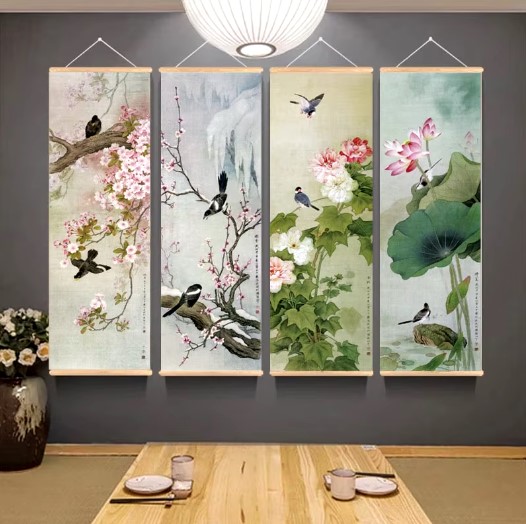Chinese ink painting, known as Shui Mo Hua (水墨画), is a traditional art form that has captivated audiences for centuries. This style emphasizes the beauty of ink and brush techniques, allowing artists to express deep emotions and capture the essence of nature. As a prominent aspect of Chinese culture, ink painting continues to thrive in contemporary art scenes, especially within China’s vibrant art hubs.
The Essence of Chinese Ink Painting
1. Historical Context
Chinese ink painting has a rich history dating back over a thousand years. Initially developed for calligraphy, it evolved into a standalone art form that reflects the philosophical beliefs of Confucianism, Daoism, and Buddhism.
Key Historical Milestones:
- Tang Dynasty (618-907 AD): The emergence of landscape painting.
- Song Dynasty (960-1279 AD): Flourishing of ink painting with notable artists like Fan Kuan.
- Yuan Dynasty (1271-1368 AD): The rise of individual expression in art.
2. Techniques and Materials
Essential Tools:
- Brushes: Various sizes and shapes for different strokes.
- Ink: Traditionally made from ink sticks ground on an ink stone.
- Paper: Rice paper or silk, chosen for its absorbency and texture.
Painting Techniques:
- Wet-on-wet: Applying ink to wet paper for fluid effects.
- Dry brush: Creating textures by using a drier brush.
- Layering: Building depth through multiple ink applications.
Themes in Chinese Ink Painting
1. Nature and Landscapes
Nature is a central theme in Chinese ink painting, with artists capturing mountains, rivers, flowers, and animals. These elements symbolize harmony and the interconnectedness of life.
2. Calligraphy and Poetry
Many ink paintings incorporate calligraphy and poetry, enhancing the visual experience. The integration of text adds layers of meaning and context.
3. Expressive Styles
Chinese ink painting features various styles:
- Traditional: Focused on realism and detail.
- Abstract: Emphasizing brushstroke and color over representational forms.
- Contemporary: Merging traditional techniques with modern themes.
FAQs About Chinese Ink Painting
| Question | Answer |
|---|---|
| What distinguishes Chinese ink painting from Western painting? | It focuses on brushwork, ink variation, and philosophical expression rather than realism. |
| Can I use color in ink painting? | Yes, many artists incorporate color, but traditional ink painting primarily uses black ink. |
| What are the main themes in ink painting? | Nature, landscapes, and philosophical concepts are prevalent themes. |
| How do I start learning ink painting? | Consider taking classes, watching tutorials, and practicing regularly with the right materials. |
| Is it necessary to have traditional materials? | While traditional materials are preferred, modern alternatives can also be effective. |
Engaging with Chinese Ink Painting
1. Workshops and Classes
Many art schools and cultural centers in China offer workshops focused on Chinese ink painting. These classes provide invaluable hands-on experience and mentorship from skilled artists.
2. Exhibitions and Art Shows
Attending exhibitions allows you to appreciate the diversity and depth of Chinese ink painting. Many galleries showcase both traditional and contemporary works, providing insights into the evolution of this art form.
3. Online Resources
Explore online platforms featuring tutorials, articles, and communities dedicated to Chinese ink painting. Engaging with these resources can enhance your understanding and practice.
Tips for Practicing Chinese Ink Painting
- Invest in Quality Materials: High-quality brushes, ink, and paper make a significant difference in your results.
- Practice Brush Techniques: Regularly practice different strokes to develop your skills.
- Study Masterworks: Analyze famous ink paintings to understand techniques and styles.
Final Thoughts
Chinese ink painting is a captivating art form that embodies the beauty of nature and philosophical depth. By exploring its techniques and themes, you can connect with a rich cultural heritage that continues to inspire artists worldwide.



